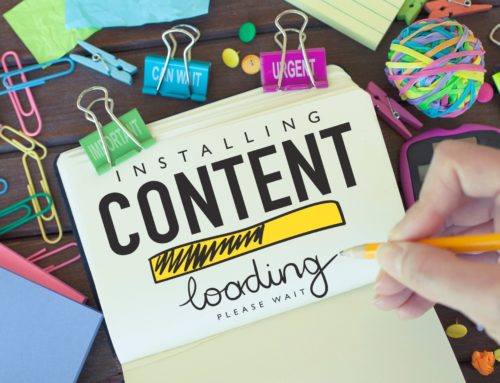Most companies aren’t even sure why they should be in the business of lead generation to begin with, or they’re getting leads from poor-quality sources without even realizing it.
They’re generating leads and they’re not getting much in the way of results from those leads. They typically don’t understand that there’s a difference between the different ways of bringing people in as leads.
Business owners typically understand that paid customers are better than non-customers, but they usually don’t understand that there’s a gradient scale, from high-quality leads to those they shouldn’t be in the business of getting at all.
So let’s go through each lead type one by one.
Quality of Leads (from best to worst)

Keep in mind that this is not a definitive order of lead quality. You will occasionally run into situations where this order may be different for you than what’s listed below. This is a general order based on our experience dealing with eCommerce clients over our years in business, but in the end you as a business owner will have to test and check conversion rates frequently with each optin method to see which ones work best for you.
With that said, you will want to stick to the higher end of this list, as this will ensure you get higher-quality leads for your business. Using the methods mentioned in the lower end of this list will virtually guarantee an avalanche of garbage, money-wasting leads.
Customers

Your already paid customers will always be your top leads, and it’s important to think of customers as high-value leads even though they already bought from you.
The problem is that many business owners do a poor job of marketing back to customers.
Generally they put those customers on a newsletter, and that’s about it. They don’t do anything to really nurture those customers to buy anything else from them in the future. They don’t run new promotions to them, they don’t put them in custom audiences to remarket to them on social media, they don’t get customers to follow them on social media, and so on. They get them as customers and then they really don’t know what to do with them.
Make no mistake: These are your best leads!
If you nurture them correctly you can get them to become cheerleaders and advocates for your brand, which is the most powerful form of marketing that any business could ever hope to have at their disposal.
Always find a way to remarket to your existing leads, especially the ones who have bought from you at least once before.
Remarket them with email and with retargeting campaigns with Facebook Ads and/or Google AdWords so they can find those customers again and invite them to come back for more.
Abandoned Shopping Cart Opt-Ins

These optins are of incredible value because these individuals are on the edge of buying and may only need a small nudge to take action. Sometimes just sending them a reminder to buy can get them to do just that.
Abandoned shopping cart optins tend to respond to remarketing emails at a very high rate.
Many businesses fail to capitalize on Abandoned Shopping Cart optins, and as a result are leaving a lot of money on the table,particularly dynamic abandoned shopping cart emails and ads. For only a few extra minutes of work, your business could end up making tens or even hundreds of thousands of dollars in rescued sales.
Referrals From Customers (B2B more common to be higher quality)
The quality of this lead is generally pretty high, but it can be dependent on how that referral is made.
A good B2B example is if you get a referral from an email introduction, where a customer or client has introduced you to someone they know as a mutual introduction letter. This would be an exceptionally high quality lead.
In B2B (in comparison to B2C), referrals from leads are more common to be higher quality.
Website Opt-Ins (Content Lead Magnets)
These are people who are opting in for a lead magnet. These are people who are looking for content such as a cheat sheet, a checklist, a guide, an ebook, and so on to help them solve a problem in their business. They’re actively pursuing a solution to a problem.
These leads are very high quality.
Opt-Ins To Join “VIP Clubs”

This is very common in eCommerce businesses and B2B.
VIP clubs, if they’re worded right, talk about exclusive content, promotions and deals, but they talk about this exclusive content in a way that includes things other than just saving money on products.
Here, you’re looking to build a tribe. You’re looking for people to join a community. you’re looking to build trust.
To promote this you could say things along the lines of “Join our VIP Club”, “Join Our Tribe”, “Get VIP Access to X”. The main pitch here is to keep people in the loop, not really to pitch a discount.
Discount Offer Opt-Ins
You usually see these on eCommerce sites as exit intent popups. These are used as an effort to save the sale in the form of “Hey, save 10%!” or something along those lines.
These leads are usually high quality, because they’re about to take action, if you combine that with a quick email series that is time-sensitive (like coupons that expire at a certain date).
Referrals From Customers B2C (Referral Candy, Ambassador, etc.)
In the B2C world it’s not as common to get referrals, but what you can do is use apps (such as Referral Candy, Ambassador, etc.). These referral apps incentivise people to give businesses referrals. These can end up being decent leads.
A brand can customize these incentives as they see fit. They can reward both the the referrer AND the referree with a bonus, a discount, or whatever else they decide to use for whatever works best for that particular business.
Actual referrals from customers, where the customer actually gets a bonus for referring people back to your business, tend to want to find people that are pretty good leads. But, there may be times where they’re just spamming referrals out to their friends, in which case the leads become low quality. So there is a risk when you offer incentives for referrals, as this can sometimes be abused.
Lead Gen Quizzes* (1 stages vs 2nd stage opt-ins)
This optin method is good because it’s interactive, you’re talking about the business, and they opt in to get their results.
There are actually 2 different stages of optins:
- People who opt in to get their quiz results
- People who opt in to learn more, schedule an appointment, etc.
If you force people to opt in to get their results, then you may just get your list filled with people whose only interest was to get their results.
If it’s optional, on the other hand, then maybe they’ll opt in and maybe they won’t. But, if they do decide to opt in when given the option, that will skyrocket the value of each optin.
Lead Gen Contests/Giveaways
This is a great way to generate inexpensive leads. This is a great option for new brands that are starting from scratch and want to get their name out there in a big way and build your list without breaking the bank.
These leads aren’t always the best, but they give you a foundation to build upon.
Aside from the email leads that you generate with these contests, you also have a strong chance to grow your social media properties at the same time.
The key caveat here is that the item has to really be related to the brand’s products and services. If it’s not then the leads you get will be really bad quality.
For example, if you’re giving away an iPad, and you’re in the business of selling exercise equipment, then they’re only entering for the iPad and couldn’t care less about your brand. To make matters worse, after the contest ends you’ll likely be reported for spam with your later messages, your open rates will be horrible, and you will have spent all that time, money and resources for nothing.
However, if you are in the business of selling snow globes and you give away a collectors edition snow globe set for all the different holidays of the year, then you’re giving away an item that is more congruent with what you do as a business. This will get you far better leads because your giveaway is congruent with your core business.
After that it comes down to how good your email sequences are to follow it up and how compelling your offer is during the contest.
You will want to sell your products during the contest as well. If you do this we strongly recommend that you add incentives within the contest for your entrees to buy from your store to increase their chances of winning. Again, if what you’re selling normally is congruent to your giveaway, then it increases the chances that your entries will become paid customers.
Exit-Intent Prize Wheels (Example: Wheelio)
What happens here is you’re on an eCommerce site of some sort, and an exit-intent popup shows up on your screen. It has a spin wheel similar to “Wheel of Fortune” that shows up on the left-hand side of the screen. Essentially, they can spin it and win stuff.
They can win a number of things, like a 10 or 15% off their next purchase, a $500 shopping spree on their online store, a gift card for another business like Starbucks, and so on.
Depending on what’s on that wheel will determine the quality of the lead. Just like the contest we described above, the more congruent your giveaway is to what your core business is about, the higher the quality you will generate.
Sweepstakes
These are national sweepstakes where you are working with other companies. For instance, you may be a sponsor in a contest that is giving away a car, and you’re sharing these leads among these companies.
The prizes are usually so general that it’s hard for those leads to be specific to your brand. The more companies that are involved, the harder it is to be specific in the way you need to be to be effective.
It is best to come up with a giveaway on your own so you can not only provide a more specific message and giveaway, resulting in a much higher quality lead, but you’ll also get to keep all the leads you generate to yourself.
Purchased Leads
Never purchase leads, ever. They don’t know who you are, and they don’t want your emails in their inbox. These are garbage leads at all times. Avoid this methodology like the plague.
Scraped Leads
This methodology is actually illegal. It’s a violation of spam laws and you’ll want to stay away from this methodology for too many reasons to count.
Basically, online tools are used to download emails onto a list. They’re people who haven’t opted in, they don’t know your name, and they will most likely be hostile to your messages.
A General Rule of Thumb – Using Double Opt-Ins
The quality of your leads tend to jump when you use double opt-ins for your email list. This is recommended for almost all of the lead generation methods EXCEPT abandoned shopping cart sequences, and you don’t really need this for paid customers.
However, the lower on this quality list that you go, the more you will need it. You can really filter out the nonsense by forcing a double opt-in.
Tracking lead sources via pixels, Google UTM codes, or advanced 3rd-party tracking tools

You want to fully understand your leads, how you’re getting them, how they’re interacting with your messages, and so on. Here are some methods you can use right away:
Facebook Pixels
When you place Facebook pixels on every key page of your website (such as checkout pages, thank you pages, add-to-cart pages, or registration pages) you can see how many people take action on your ads and which ad led to a conversion (or in this case, generated a lead).
Google UTM Codes
UTM codes are essentially tags that are added to the end of a URL that allow you to track each specific instance of a link.
They are a useful way to track all of your online marketing efforts, including lead generation. You can create different URLs with these different tags within Google Analytics Link Builder and place each of these created links on each campaign you want to promote. When a user clicks on these UTM code populated links, all of the tags are sent back to Google Analytics for tracking. This allows you to track each campaign at a granular level.
Third-Party Tracking Tools
There are tons of lead tracking tools out there, and it’s important to find one that’s right for your specific needs.
Here are some choices to get you started:
1. Zoho
Zoho CRM is a robust yet affordable platform with a wide range of features. This is but one of 30 of Zoho’s products that all work together in one synergistic package, making it a great all-in-one suite to run an entire business.
2. Salesforce
Salesforce is a great CRM to use for businesses with larger sales teams. Salesforce has a wide array of customization options and advanced features. For each contact on your list, you can enter basic information, schedule tasks, view contact history and browse attachments.
3. Really Simple Systems
While Salesforce is good for larger sales teams, Really Simple Systems is great for startup with limited staff. It allows sales teams to record cost per lead, cost per opportunity, cost per sales, and – therefore – your return on investment.
CRM “Lead Scoring” based on contact interactions, purchase history, etc.

Lead scoring measures the value of each lead and helps your sales reps determine how to prioritize their interactions with these leads, and how the the nurturing process should go. In short, you’re adding up the overall benefit each lead represents for your business.
Lead scoring leads to fewer opportunities being lost since now your sales reps know who to focus on and they can talk with your most excited leads right away while they’re at their most excited. At the same time it also cuts down on wasting time with leads that aren’t so excited.
One study even suggests that a 10% increase in lead quality could turn into a 40% increase in sales productivity.
Putting It All Together
Getting an avalanche of leads isn’t always a good thing. Yes, the number of leads is important, but the quality of your leads is what will make or break your business.
Make sure you use the highest-quality methods of lead generation that fit best with your business, send them customized messages to communicate with them on an individual level, and sell to them when they are the most excited. This will help bring your business your most valuable leads, and allow you to keep them around for years to come.
Are you using your lead generation tools to their highest potential? Take our lead generation quiz to find out.







Leave A Comment